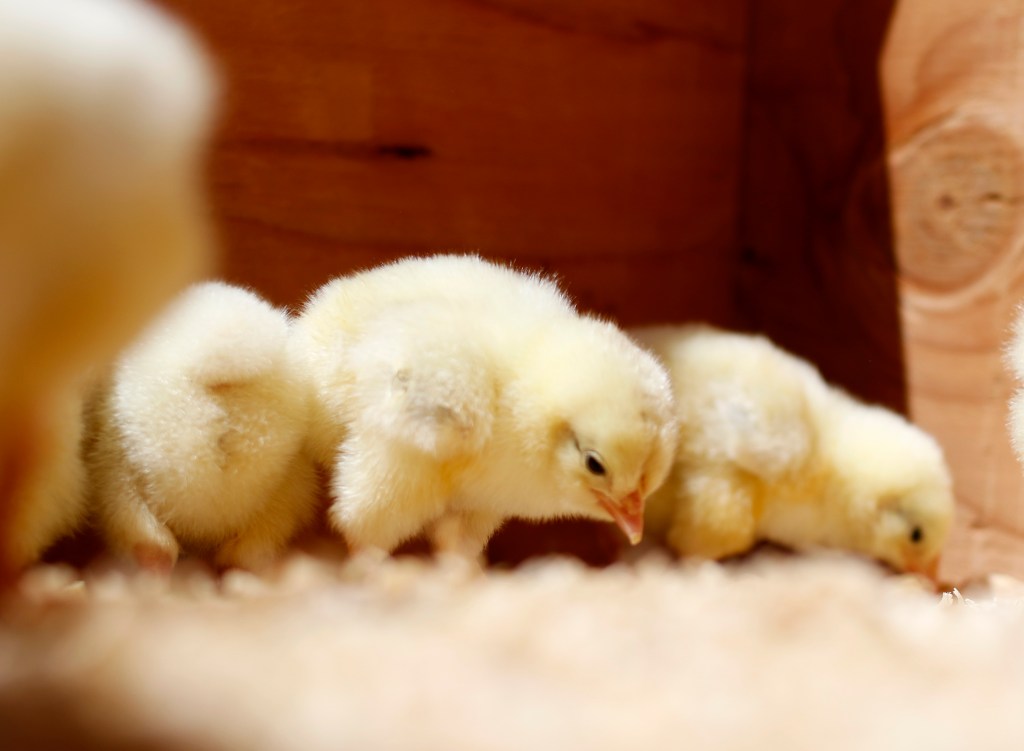The COVID-19 outbreak is triggering waves of creative food production and distribution across the country. From gardening and canning projects to signing up for produce, seafood, and meat delivery services, there’s never been a better time to solidify your edible resources.
For those who have the space, which can simply be a small yard, raising chickens for eggs is another step in the direction of DIY food security. Demand for baby chicks is way up at Dare 2 Dreams, located just west of Lompoc. There’s been a fivefold increase in the family-owned farm’s chick business, and they sold 600 birds in 13 minutes on one April night alone.
The farm’s co-owner, Megan Raff, explained a little about the business and what chicken raising entails last week.
Tell us about Dare 2 Dream Farms. We started keeping chickens as a way to help my husband Jeremy’s aging grandpa stay active and engaged outside, and we began selling the extra eggs to markets like New Frontiers and Isla Vista Food Co-op. During the last recession, we identified backyard chickens as an answer for food insecurity in urban areas and began working with households to help them start keeping chickens for a steady supply of fresh eggs.
As time moved on, and food security became less of a concern for many individuals, the bonds between chickens and their owners remained, so keeping chickens shifted from being a necessity to more of a hobby. Our farm has been at the forefront of the backyard chicken movement on the Central Coast from Los Angeles to the Bay Area, coaching beginners on breeds, best practices, and preferred feeds and supplies.
How has the coronavirus outbreak changed things? COVID-19 has raised food-security concerns again, and we are more prepared than ever to field the influx of beginner backyard chicken keepers. We have increased the number of chicks we’re raising by over 500 percent year over year. To practice safe social-distancing practices, customers can pick up their chickens by appointment, or we can deliver directly to homes.
What sort of housing do you need to build for them to be safe? Chickens need a coop: an enclosed house that protects them from nighttime predators like raccoons and the natural elements like wind and rain. The coop should also provide a nesting box to use as a safe place to lay their eggs and roosts for them to perch on to sleep at night. Ideally, coops also have a wire-enclosed extension, also called a run, where the chickens can spend the day outside but still be protected from daytime predators like coyotes and hawks. However, some chicken keepers prefer to give their chickens free-range of the backyard during the day to maximize their ability to exercise and forage.
Why are backyard chickens a good teaching tool? Chickens make great pets, so kids and adults alike stay engaged with them. They don’t require a lot of initial investment: a small coop, chicken feed, and containers for the feed and water. Then with proper care, they provide one of the most basic staples in the kitchen, which makes keeping them seem like a no-brainer. They become an example for kids about where their food comes from and how we should care for the animals that provide food for us.
Even for households without children, chickens remain an excellent gateway to gardening by demonstrating that growing your own food, or raising animals as a source of food, can be affordable, achievable, and rewarding.
Learn more and order your own chicks at dare2dreamfarms.com/chickens.
At the Santa Barbara Independent, our staff is working around the clock to cover every aspect of this crisis — sorting truth from rumor. Our reporters and editors are asking the tough questions of our public health officials and spreading the word about how we can all help one another. The community needs us — now more than ever — and we need you in order to keep doing the important work we do. Support the Independent by making a direct contribution or with a subscription to Indy+.

